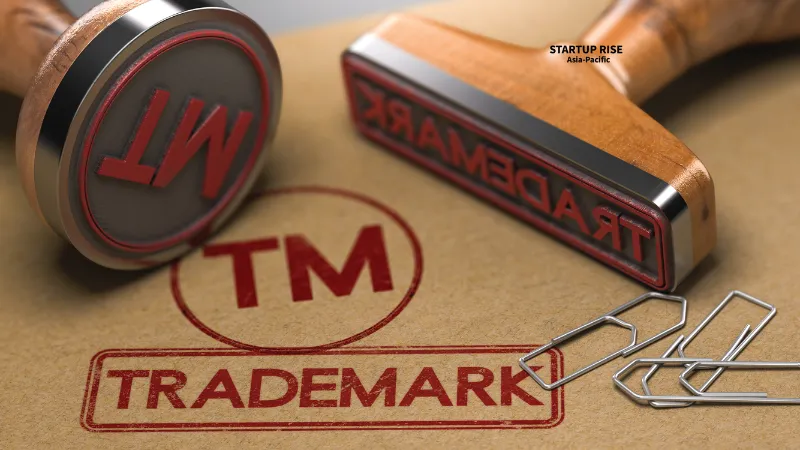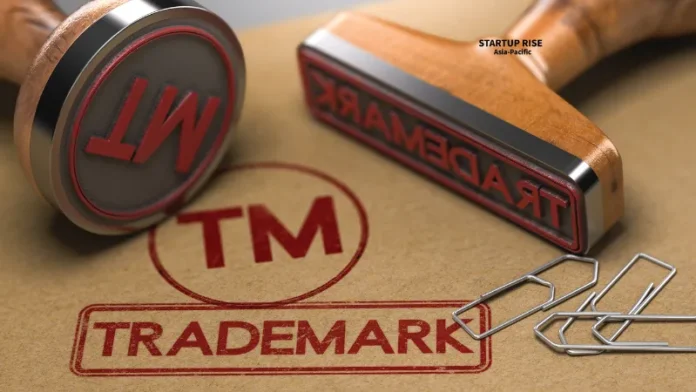
Trademarks play a crucial role in helping consumers identify products and services. Trademarks not only foster brand loyalty but also protect a business’s reputation. Every country has its own trademark laws and registration processes. In this article, we will delve into Hong Kong’s trademark laws and policies, classification of goods and service classes and crucial points to consider before registering a trademark in Hong Kong.
What is a trademark?
A trademark is a symbol, word, or design that identifies and distinguishes a brand’s goods or services from others. It helps customers recognize the brand, protects it from counterfeiting and guarantees quality. It can even be used for advertising. Trademarks can include brand names, logos, slogans and packaging designs.
Trademarks are protected by intellectual property rights. A trademark must be distinctive to be eligible for registration. The process and cost of registering a trademark vary by country. A registered trademark lasts for 10 years and can be renewed indefinitely.
Hong Kong has its own trademark laws which have been governed by the Trade Marks Ordinance since 2003. These laws provide important protections for businesses and their brands.
Understanding Trademark Laws and Policies in Hong Kong
- Legal Protection: Trademark registration legally protects brands, grants access to regional markets and supports enforcement against infringement under the Trade Descriptions Ordinance (TDO).
- International Protection: Registered trademarks can be protected internationally through the Madrid Protocol.
- Unregistered Trademarks: Unregistered trademarks are protected under common law through the “passing off” action.
- Environmental Efforts: Green trademarks can highlight a business’s environmental commitment.
- Registration Duration: Trademarks are registered for 10 years and can be renewed. They can be cancelled if not used for three years.
- Application Process: Trademarks can be applied online or at the Trade Marks Registry, with a three-month opposition period.
- Additional Protections: The law offers broader protection for certification marks, collective marks and well-known trademarks.
- Descriptive Marks: Trademarks that are too descriptive of the goods or services they represent cannot be registered.
- International Applications: Separate trademark applications are required for countries like Mainland China and Macau.
- Simplified Processes: Trademark assignment and license registration procedures are simplified under the law.
Trademark Classification List
The trademark must be categorized into one of the 45 classes of goods and services before applying for trademark registration in Hong Kong. This classification follows the 10th edition of the Nice Classification (2014) by the World Intellectual Property Organization (WIPO), which has been in use in Hong Kong since January 1, 2014. The classification helps applicants identify the appropriate class for their goods and services. Here is a list of trademark classifications, which is certified by the Intellectual Property Department of Hong Kong.
Goods Classes
- Class 1
Chemicals for use in industry, science and photography, as well as in agriculture, horticulture and forestry; unprocessed artificial resins, and unprocessed plastics; fire extinguishing and fire prevention compositions; tempering and soldering preparations; substances for tanning animal skins and hides; adhesives for use in industry; putties and other paste fillers; compost, manures, fertilizers; biological preparations for use in industry and science. - Class 2
Paints, varnishes, lacquers; preservatives against rust and against deterioration of wood; colourants, dyes; inks for printing, marking and engraving; raw natural resins; metals in foil and powder form for use in painting, decorating, printing and art. - Class 3
Non-medicated cosmetics and toiletry preparations; non-medicated dentifrices; perfumery, essential oils; bleaching preparations and other substances for laundry use; cleaning, polishing and abrasive preparations. - Class 4
Industrial oils and greases, wax; lubricants; dust absorbing, wetting and binding compositions; fuels and illuminants; candles and wicks for lighting. - Class 5
Pharmaceuticals, medical and veterinary preparations; sanitary preparations for medical purposes; dietetic food and substances adapted for medical or veterinary use, food for babies; dietary supplements for human beings and animals; plasters, materials for dressings; material for stopping teeth, dental wax; disinfectants; preparations for destroying vermin; fungicides, herbicides. - Class 6
Common metals and their alloys, ores; metal materials for building and construction; transportable buildings of metal; non-electric cables and wires of common metal; small items of metal hardware; metal containers for storage or transport; safes. - Class 7
Machines, machine tools, power-operated tools; motors and engines, except for land vehicles; machine coupling and transmission components, except for land vehicles; agricultural implements, other than hand-operated hand tools; incubators for eggs; automatic vending machines. - Class 8
Hand tools and implements, hand-operated; cutlery; side arms, except firearms; razors. - Class 9
Scientific, research, navigation, surveying, photographic, cinematographic, audiovisual, optical, weighing, measuring, signalling, detecting, testing, inspecting, life-saving and teaching apparatus and instruments; apparatus and instruments for conducting, switching, transforming, accumulating, regulating or controlling the distribution or use of electricity; apparatus and instruments for recording, transmitting, reproducing or processing sound, images or data; recorded and downloadable media, computer software, blank digital or analogue recording and storage media; mechanisms for coin-operated apparatus; cash registers, calculating devices; computers and computer peripheral devices; diving suits, divers’ masks, ear plugs for divers, nose clips for divers and swimmers, gloves for divers, breathing apparatus for underwater swimming; fire-extinguishing apparatus. - Class 10
Surgical, medical, dental and veterinary apparatus and instruments; artificial limbs, eyes and teeth; orthopaedic articles; suture materials; therapeutic and assistive devices adapted for persons with disabilities; massage apparatus; apparatus, devices and articles for nursing infants; sexual activity apparatus, devices and articles. - Class 11
Apparatus and installations for lighting, heating, cooling, steam generating, cooking, drying, ventilating, water supply and sanitary purposes. - Class 12
Vehicles; apparatus for locomotion by land, air or water. - Class 13
Firearms; ammunition and projectiles; explosives; fireworks. - Class 14
Precious metals and their alloys; jewellery, precious and semi-precious stones; horological and chronometric instruments. - Class 15
Musical instruments; music stands and stands for musical instruments; conductors’ batons. - Class 16
Paper and cardboard; printed matter; bookbinding material; photographs; stationery and office requisites, except furniture; adhesives for stationery or household purposes; drawing materials and materials for artists; paintbrushes; instructional and teaching materials; plastic sheets, films and bags for wrapping and packaging; printers’ type, printing blocks. - Class 17
Unprocessed and semi-processed rubber, gutta-percha, gum, asbestos, mica and substitutes for all these materials; plastics and resins in extruded form for use in manufacture; packing, stopping and insulating materials; flexible pipes, tubes and hoses, not of metal. - Class 18
Leather and imitations of leather; animal skins and hides; luggage and carrying bags; umbrellas and parasols; walking sticks; whips, harnesses and saddlery; collars, leashes and clothing for animals. - Class 19
Materials, not of metal, for building and construction; rigid pipes, not of metal, for building; asphalt, pitch, tar and bitumen; transportable buildings, not of metal; monuments, not of metal. - Class 20
Furniture, mirrors, picture frames; containers, not of metal, for storage or transport; unworked or semi-worked bone, horn, whalebone or mother-of-pearl; shells; meerschaum; yellow amber. - Class 21
Household or kitchen utensils and containers; cookware and tableware, except forks, knives and spoons; combs and sponges; brushes, except paintbrushes; brush-making materials; articles for cleaning purposes; unworked or semi-worked glass, except building glass; glassware, porcelain and earthenware. - Class 22
Ropes and string; nets; tents and tarpaulins; awnings of textile or synthetic materials; sails; sacks for the transport and storage of materials in bulk; padding, cushioning and stuffing materials, except of paper, cardboard, rubber or plastics; raw fibrous textile materials and substitutes therefore. - Class 23
Yarns and threads for textile use. - Class 24
Textiles and substitutes for textiles; household linen; curtains of textile or plastic. - Class 25
Clothing, footwear, headwear. - Class 26
Lace, braid and embroidery and haberdashery ribbons and bows; buttons, hooks and eyes, pins and needles; artificial flowers; hair decorations; false hair. - Class 27
Carpets, rugs, mats and matting, linoleum and other materials for covering existing floors; wall hangings, not of textile. - Class 28
Games, toys and playthings; video game apparatus; gymnastic and sporting articles; decorations for Christmas trees. - Class 29
Meat, fish, poultry and game; meat extracts; preserved frozen, dried and cooked fruits and vegetables; jellies, jams, compotes; eggs; milk, cheese, butter, yogurt and other milk products; oils and fats for food. - Class 30
Coffee, tea, cocoa and substitutes therefore; rice, pasta and noodles; tapioca and sago; flour and preparations made from cereals; bread, pastries and confectionery; chocolate; ice cream, sorbets and other edible ices; sugar, honey, treacle; yeast, baking-powder; salt, seasonings, spices, preserved herbs; vinegar, sauces and other condiments; ice (frozen water). - Class 31
Raw and unprocessed agricultural, aquacultural, horticultural and forestry products; raw and unprocessed grains and seeds; fresh fruits and vegetables, fresh herbs; natural plants and flowers; bulbs, seedlings and seeds for planting; live animals; foodstuffs and beverages for animals; malt. - Class 32
Beers; non-alcoholic beverages; mineral and aerated waters; fruit beverages and fruit juices; syrups and other preparations for making non-alcoholic beverages. - Class 33
Alcoholic beverages, except beers; alcoholic preparations for making beverages. - Class 34
Tobacco and tobacco substitutes; cigarettes and cigars; electronic cigarettes and oral vaporizers for smokers; smokers’ articles; matches.
Service classes
- Class 35
Advertising; business management, organization and administration; office functions. - Class 36
Financial, monetary and banking services; insurance services; real estate services. - Class 37
Construction services; installation and repair services; mining extraction, oil and gas drilling. - Class 38
Telecommunications services. - Class 39
Transport; packaging and storage of goods; travel arrangement. - Class 40
Treatment of materials; recycling of waste and trash; air purification and treatment of water; printing services; food and drink preservation. - Class 41
Education; providing of training; entertainment; sporting and cultural activities. - Class 42
Scientific and technological, services and research and design relating thereto; industrial analysis, industrial research and industrial design services; quality control and authentication services; design and development of computer hardware and software. - Class 43
Services for providing food and drink; temporary accommodation. - Class 44
Medical services; veterinary services; hygienic and beauty care for human beings or animals; agriculture, aquaculture, horticulture and forestry services. - Class 45
Legal services; security services for the physical protection of tangible property and individuals; dating services, online social networking services; funerary services; babysitting.
Points to keep in mind while registering trademarks in Hong Kong
- When applying for a trademark, you must list the goods and services you want to register, specifying the relevant class(es).
- The classes are based on the 12th edition of the Nice Classification (2024) by the World Intellectual Property Organization (WIPO).
- You should check the Nice Classification to determine which class your goods and services fall into. For more details, visit the WIPO website.
- In Hong Kong, trademarks are classified under the International Classification of Goods and Services based on the Nice Agreement, with 45 classes.
- It’s important to register your trademark in the correct class to ensure proper protection.
- If a trademark is registered in the wrong class, the application will need to be corrected.
- The Nice Classification is regularly updated, so staying current is important for proper trademark protection.
- Avoid using words that are already registered trademarks in your application.
- A list of suggested alternatives for registered trademarks is available, but it’s not exhaustive.
- Accolade assists clients in registering trademarks in all relevant classes to avoid application issues.
Conclusion
Businesses that are aiming for international expansion must register their trademarks in each country they operate in, to protect and enforce their brand rights. Trademarks are important as they help consumers identify and distinguish products and services. Understanding the different trademark registration processes in regions like Hong Kong and Mainland China is essential for businesses. Businesses can safeguard their brand, expand successfully, build trust, gain competitive advantages and maximize the value of their intellectual property by effectively navigating Hong Kong’s trademark registration.





